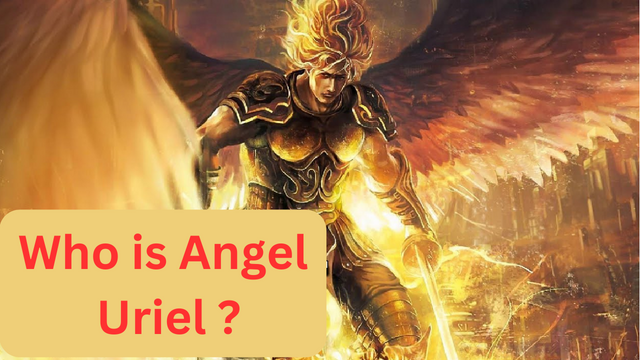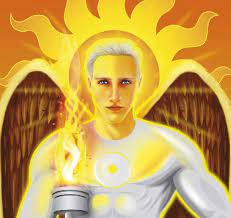Who is Angel Uriel?

Uriel’s name means “God is my light,” “God’s fire,” “God’s flame,” or even “God’s face.” About Agni, he shines the light of wisdom and truth amid uncertainty, deception, and darkness. This extends to controlling emotions, releasing anger, and overcoming anxiety. Uriel does not share the same reverence as the other Archangels, nor is he responsible for anything specific as is the case with Michael (the warrior), Gabriel. (Messenger) and Raphael (Healer).
Origin
One would think that Uriel’s position is marginal and appears only in the background. Uriel’s presence in addition to acting as a voice delivering visions and messages. But other apocryphal texts describe some of his most notable actions and motives.
Being the messenger of wisdom means that their association corresponds to the mind, where thoughts, ideas, creativity, and philosophy take root. This archangel reminds humanity to worship only God, not him. Uriel provides guidance, removes obstacles, and provides protection, especially when danger is present.

Catholic Faith
Uriel is the way to salvation and repentance, granting forgiveness to those who seek it. He stands before the gates of heaven and guards the entrance to Hades, the underworld. Uriel is the one who accepts or rejects the entry of a soul into the kingdom of God. Enlightenment, and the Sacrament of Confirmation. But the Catholic faith has had a history of conflict with belief in angels, particularly Uriel. Although this pope approved of honoring angels, he condemned the worship of angels, saying that it came too close to disobeying the Ten Commandments. He then limited his sacred observance to several angels by name from the list. Uriel was one of them.
In the 16th century a Sicilian friar, Antonio Lo Duca conceived Uriel who told him to build a church in Termini. Pope Pius IV approved and hired Michelangelo for the architecture. Today, it houses the church of Santa Maria degli Angeli a dei Martiri in the Esedra Plaza. Pope Zachary’s proclamation held no water.
What’s more, this papal edict did not prevent Byzantine Catholicism, Rabbinic Judaism, Kabbalism, or Eastern Orthodox Christianity. They take Uriel very seriously and view ancient apocryphal texts like the Bible, the Torah, or even the Talmud. Well and is seen as an important angel.
Uriel in Judaism
According to rabbinic Jewish tradition, Uriel is the leader of the entire angelic host and gives entrance to the underworld, and appears like a lion. He is one of the few Archangels, outside of the Seraphim, to enter the direct presence of God. Uriel was the angel who checked the doors for the blood of the lamb during the plagues in Egypt.
Talmudic and Kabbalistic texts, such as the Midrash, the Kabbalah, and the Zohar, affirm these concepts. They believe that whoever gazes upon the flames of the altar of God will experience a change of heart and repentance. The Zohar also describes how Uriel has a dual aspect: Uriel or Nuriel. As Uriel, he is mercy, but as Nuriel he is severe, thus indicating his ability to destroy evil or grant forgiveness.

Byzantine and Eastern Orthodox Christians
Eastern Orthodox and Byzantine Christians attribute summer to Uriel, overseeing blooming flowers and ripening food. They keep a feast day for the Archangel in November called the “Synaxis of the Archangel Michael and the Other Body Powers”. Here, Uriel is the ruler of the arts, thought, writing, and science. The 11th, which is called “The Homily of Archangel Uriel”. They see him as one of the greatest archangels because of his prophecies for Enoch and Ezra.
According to these Christians, Uriel witnessed the crucifixion of Jesus. Uriel filled a chalice with Christ’s blood by dipping his wings into it. With the cup, he and Michael rush to sprinkle it across Ethiopia. As he sprinkled, wherever a drop fell, a church sprang up.
Uriel in Islam
Although Uriel is a beloved figure among Muslims, there is no mention of his name in the Quran or any Islamic text, such as Michael or Gabriel. According to Islamic belief, Israfil is compared to Uriel. But in Israfil’s description, he appears to be more akin to Raphael than to Uriel.
Secular faith
There are many accounts of people claiming to have seen and experienced Uriel. Amazingly, esoteric, occult, and pagan circles formed whole incantations around Uriel. They also see him as a symbol of knowledge, thought, art, and philosophy.
